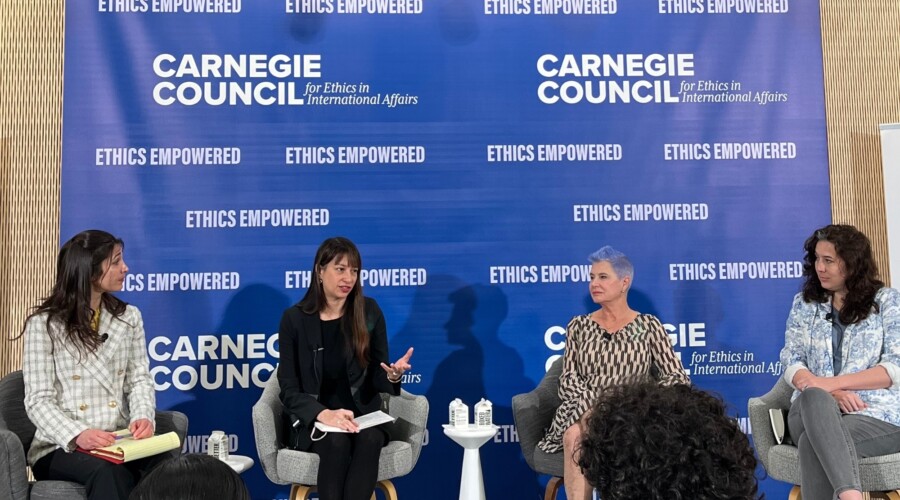My topic is the housing development work of community development corporations (CDCs) in the United States, with particular emphasis on the intermediary role played by my organization, the Local Initiatives Support Corporation (LISC). Local CDCs, with the assistance of nonprofit intermediaries such as LISC, have revitalized urban and rural communities across the United States.
In the United States, the real estate system—made up of builders, lenders, real estate agents, state and municipal regulatory bodies, architects, engineers, appraisers, environmental specialists, and a host of other professionals—functions well to develop, build, buy, sell, and finance single-family and multifamily housing. Long-term fixed-rate mortgages are the rule in most places and, with the secondary market system spreading interest rate and credit risk and providing a virtually unlimited supply of mortgage funds through its access to the capital markets, the real estate system is excellent. Excellent, that is, if one is not poor, not a minority, and does not live in a depressed urban center or a remote rural area. To meet the housing needs of these populations, this market-based real estate system needs to be supplemented.
Over the years, there has been an interesting array of state and federal programs and policies aimed at meeting the housing needs of these populations. During the late 1960s and early 1970s, there was considerable involvement at the federal level in providing project-based assistance. With the housing moratorium of 1973, the federal role came under question. Even though housing production remained high during the 1970s because of momentum in the industry, a significant shift in focus took place. Essentially the federal categorical programs that supported production were replaced by tenant-based subsidies, available funds were reduced, and the responsibility for development activities shifted to the states. For rural areas, the federal programs of the Farmers Home Administration, reorganized as the Rural Development Administration in 1995, remained essentially in place, but their funding was reduced significantly and their delivery system decimated with the reduction of personnel and local offices.
A positive initiative has been the creation of the Low Income Housing Tax Credit (LIHTC) in 1986 as a stimulus to multifamily housing production. Since its founding, the program has accounted for 40 percent of the multifamily housing produced in the country and 90 percent of the affordable multifamily housing.
Today, the major concerns regarding affordable housing in the United States have to do with affordable financing and delivery on the production side, and with subsidies for rent overburden on the existing housing side. To help alleviate the financing concern, the federal government has created programs, such as the Home Investment Partnership Program (HOME) and the Community Development Block Grant Program (CDBG), to assist low-income families. But appropriation levels are not adequate to meet the need, and in some cases the funds are difficult to access. Rural areas are faced with additional barriers, such as isolation, deep poverty, the needs of special population groups like farm workers and Native Americans, and lack of access to credit. To facilitate this process, my organization, LISC, launched its rural initiative three years ago.
The development of housing for low-income families has thus become a difficult process, often involving cobbling together a variety of subsidy and other financing resources. It is in facilitating this process that CDCs have become important. They go by a variety of names, such as nonprofit housing development corporations and community action programs, but are similar in that they are all community-based nonprofits working to solve the housing problems of the poor and to provide economic development opportunities in disadvantaged communities. CDCs are well suited to capitalize on available government funding and programs such as HOME, CDBG, and the LIHTC while operating creatively to build the partnerships and find the resources required to meet development needs. In the United States, CDCs are often the only resource in distressed communities providing the social services necessary to enable certain populations to access affordable housing, including counseling for potential low-income homeowners and social services to families in rental housing.
CDCs function poorly in isolation, however, and need training, technical assistance, the capacity to share information, and, in particular, support in accessing funding sources. LISC meets these needs with its financial and technical services and its function as an intermediary with major corporate, foundation, and other funders. Other national intermediary organizations providing similar services to local development groups are the Housing Assistance Council in rural areas, the Enterprise Foundation, the McAuley Institute, the Rural Community Assistance Corporation in the west, and, of course, Habitat for Humanity with its vast network. Intermediary organizations can help local CDCs become effective in providing development assistance to distressed communities and creating an infrastructure of competent, committed human capital and technical capacity in those communities.
The following points summarize lessons from the experience of U.S. CDCs and intermediary groups:
- Local NGOs can be a powerful force in developing affordable housing, as has been demonstrated by their community organizing, their contributions of expertise in the housing development process, and their creation of collaborative relationships including financial partnerships.
- Local NGOs need national or regional technical and financial intermediary services like those provided by LISC. Accessing private capital at concessionary rates and terms is crucial to increasing the capacity of NGOs. LISC has demonstrated that making financial partners of corporations, foundations, and others in the private sector not only adds financial investments but increases the efficiency and credibility of CDCs.
- Many CDCs in the United States act as lenders, making funds available at low cost to families for the purchase of new, existing, or rehabilitated houses. Time and again they have shown that loan funds controlled by NGOs, credit unions, or other community-based institutions and made available to the poor are a powerful tool in the creation of affordable housing in the developing world. Given the resources, families will find a way to house themselves adequately. In addition, as they pay back the loans, they establish credit and make themselves bankable.
- CDCs can use the federal programs of the U.S. Department of Agriculture (USDA) Rural Development Administration (RDA) effectively. This is particularly true of the Mutual Self-Help Housing Program, where families are provided low-cost mortgage loans and assisted by CDCs to build their own homes. An additional program is the Rural Home Loan Partnership, initiated by LISC working with the USDA, whereby CDCs assist families in purchasing homes with low-cost, long-term mortgage funds provided by RDA combined with financing from private financial institutions.
U.S. CDCs and their national and multistate intermediaries tend to focus on their own situations with little thought about the broader world. With few exceptions, they act and think locally. They are so busy raising funds, putting together complex deals, and struggling against local contradictions and problems that global concerns are not considered germane to their situation. This is unfortunate because there are models developed by NGOs in the developing world that could be applied effectively in the United States. One example is financial underwriting for affordable single-family housing. In the United States, property is almost universally used as collateral, and when a family fails to pay, the property is taken to satisfy the debt. In many countries, loan underwriting for the poor is done more personally through communal cooperative structures, peer pressure, and other methods. U.S. CDCs could learn from these models.
In addition, NGOs in the developing world are often more attuned to the globalization of poverty, urbanization, work, industry, and technology. This trend has not had great impact on the work of U.S. CDCs to date (with the exception of those working along the border with Mexico), but American CDCs need to be aware that what happens in the larger world increasingly affects their local communities.
There may also be lessons from our experience for East Asia and other parts of the world. For example, the housing programs of the Rural Development Administration, particularly the self-help and the rural home loan partnership, might be interesting models that would work for affordable housing abroad. RDA self-help grants for single-family housing and direct and guaranteed loans offer an approach that is flexible and adaptable to a variety of local needs.



